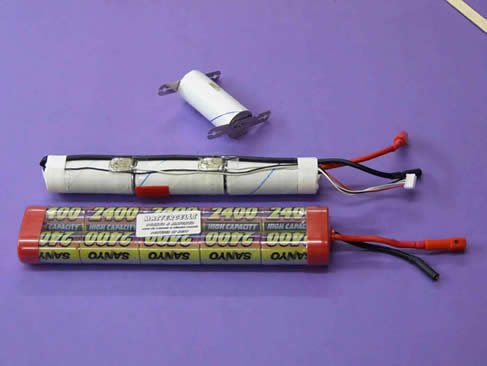
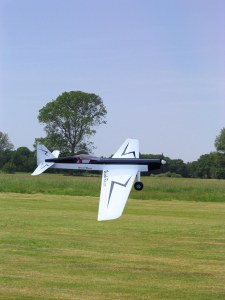
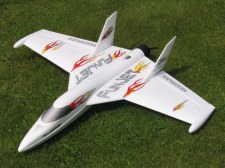
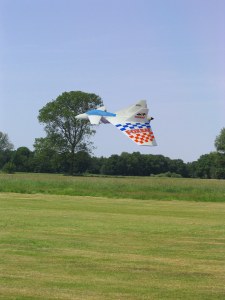

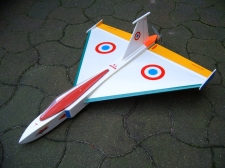
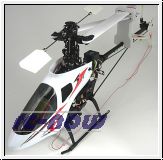
| Experiences | |||||||||||||||||||||||||||||||||||||||||||||||||||||||||||||||||||||||||||||||||||||||||||||||||||||||||||||||||||||||||||||||||||||||||||||||||||||||||||||||||||||||||||||||
During the last summer we testet the Li-Ionen cells in the configuration as 3S Stickpacks. These packs were used as replacement for 8 to 10 NiXX cells. The Li-Ion packs had a total weight of 250 g. The Li-Ion cells were used in the following models: Multiplex FunJet , Motor Hacker brushless, max. 45 A, 8 min flight timet ACT Foxbat, Motor Conrad brushless, max. 25 A. 12 min flight time Simprop Excel C 3, Motor Flyware brushless, max. 52 A, ca. 2,3 min motor run time Black Racer, Motor Flyware brushless, max. 40 A, 10 min flight time "RentnerJet", Depron- Delta with 480er Motor, max. 20 A, ca. 12 min flight time FunFlyer, Motor Flyware brushless, max. 45 A, 10 min flight time Next we intend to use them as 4S pack in a Space Pro 3.35 elektro. Because of the lower weight, the performance of the the models flown with Li-Ionen cells vs. 8 NiXX cells, was remarkably better. The performance vs. 10 NiXX cells was almost comparable, again because of the lower weight. Much better of course is a 4S Li-Ion pack to replace 10 NiXX cells. You still have a weight advantage of ca. 280 g. The voltage during discharge shows a similiar curve to NiXX cells. At the end of the discharge the voltage drops cleary, but does not collapse instantaneously. A remarkabel property of the Li-Ion cells is the fact, that voltage increases slightly with the increase of the temperature of the cells.(40 to max. 60 Degrees Celsius). That means, you have at least the same power available, until the cells are empty. The voltage drift between cells in a pack was very small. A balancing every 10 cycles is enough to keep them close together. Our test packs were charged at the flying field with the normal Li-Ion program of a Schulze-charger at 5,5 A. Thus it took a little less than 30 minutes to charge them to 100 %. Back home, the cells were charged with a standard charge at 3 A using an equalizer. We did not test the fast charge with 10 A to 95 % SOC in 15 min, simply because we did not have the charger capacity to do so. With two packs and two chargers we had only few waiting time between the flights. In the meantime a suitable charger, the Pulsar-2, is available under Products. In our applications the cells never got hot (> 40 degrees Celsius), not even at the high ambient temperature late this summer. The Li-Ion cells also proved their mechanical strenght. They survived two really major crashes of the Black Racer and the Foxbat caused by a defect transmitter antenna. The Li-Ion FEPO4 cells combine the robustness of the NiCD cells with the advantages of the Li-Ion technology. Besides these advantages and the inherent safety of the cells, they offer a long lifetime, relativating the current price. The unusual size of the cells caused no problems in the models mentioned above. Only the Foxbat needs to loose some Styropor to make the pack fit. The 2S packs make up a fine receiver battery in case the RC elements used can cope with the voltage of 5 Nixx cells.(most of them can). The Li-Ion FEOP4 cells do not reach the Energy/Weight Ratio of LiPo cells. Thus small helicopters, park- and shockflyer will still rely on LiPo cells. For all other models with enough room to take the Li-Ion cells, these cells present a good and safer alternative. By combining the Li-Ion packs on offer you can easily get packs of higher voltage. 4S from 2 x 2S, 5S from 2S and 3S, 6S from 2 x 3S or 3 x 2S or 2S and 4s, 7S from 3S and 4S or 3S and 2 x 2S, 8S from 2 x 4S etc., etc. Update! We now fly a 3S1P Li-Ion FEPO4 pack in a helicopter Belt-CP from E-Sky. Flying time is between 10 and 13 minutes. With two accupacks and a charging time of only 15 minutes with the Pulsar 2, we can fly practically without breaks. This is very helpful for training, since we got on average 45 minutes flying time per hour.
Below you see one of our test packs in comparison to a Sanyo NiCd 2400mAh inline pack with 10 cells. The Li-Ion pack weighs 350 g less. That amounts to 20 procent for a model with 1600 g mass. With the Li-Ion pack it only weighs 1250 g. The performance of the model is almost the same as with the heavier NiCD cells. |
|||||||||||||||||||||||||||||||||||||||||||||||||||||||||||||||||||||||||||||||||||||||||||||||||||||||||||||||||||||||||||||||||||||||||||||||||||||||||||||||||||||||||||||||
